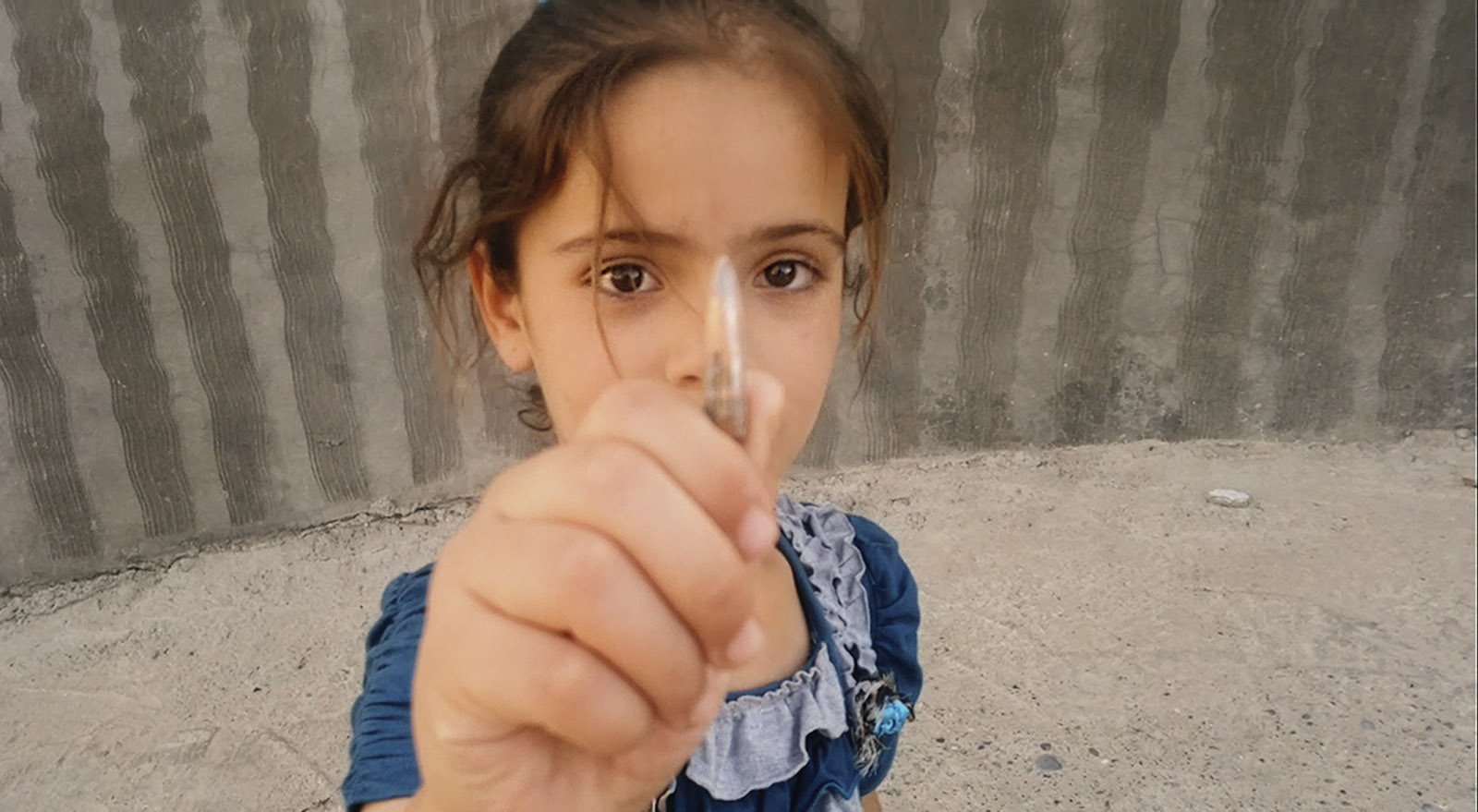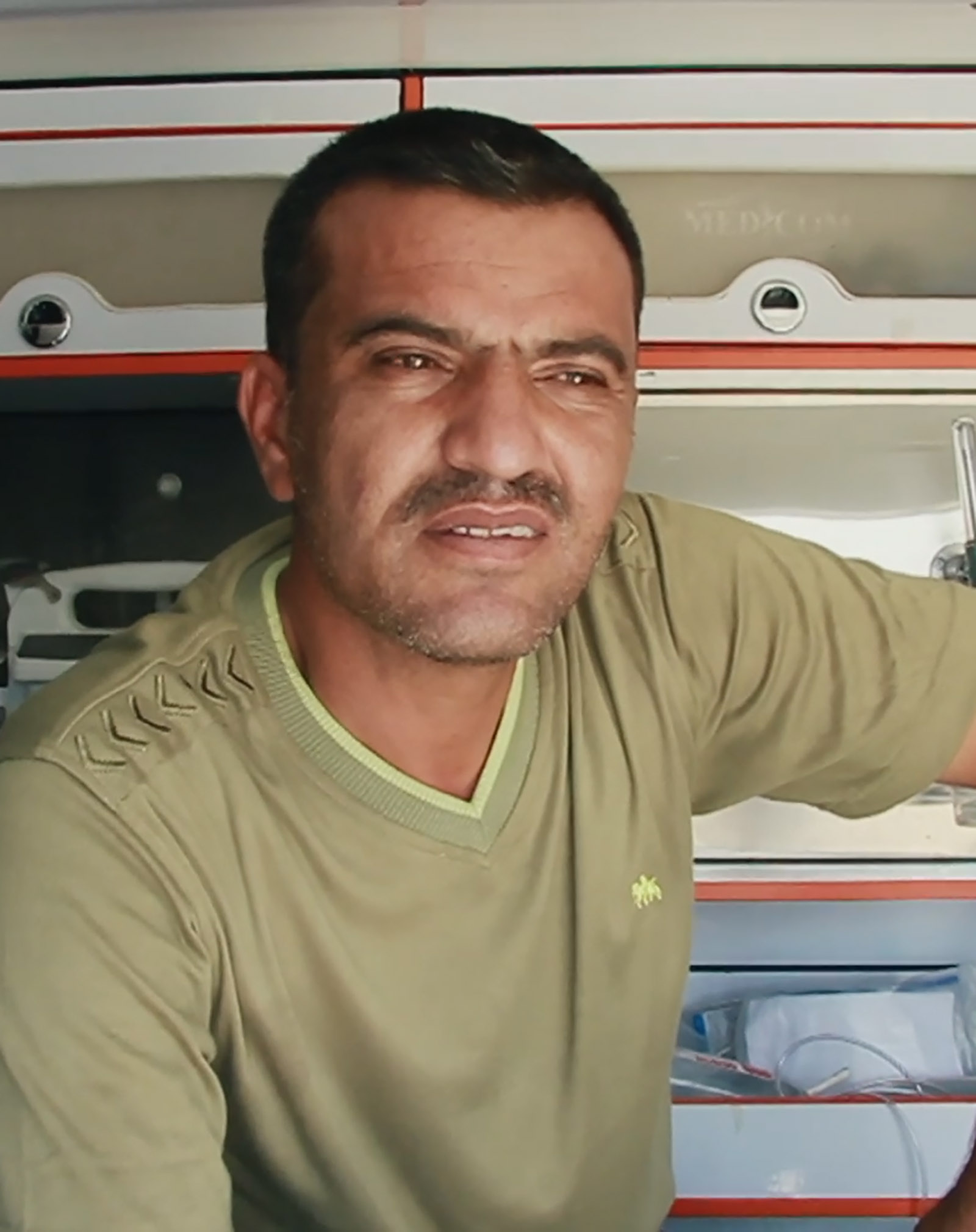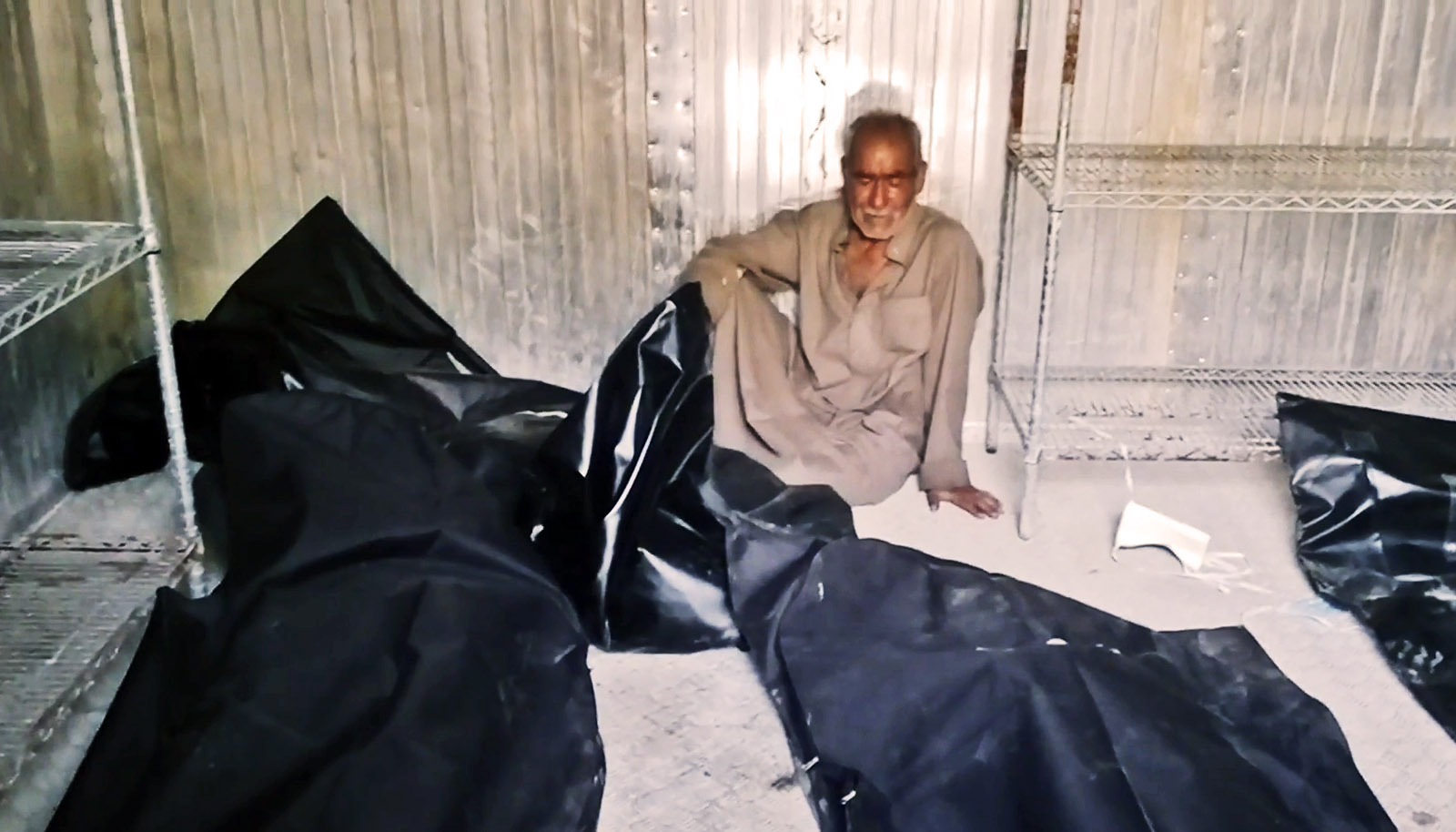Nowhere to Hide, directed by the Iraqi-Norwegian filmmaker Zaradasht Ahmed, is a documentary story of the victims of the Iraq war, from different backgrounds and walks of life, who struggle to survive one occupation only to fall prey to a second. Set in Jalawla and the surrounding villages of Diyala province, northeast of Baghdad, the film opens soon after the withdrawal of American troops from Iraq in December 2011.
It follows the daily life of Nori Sharif, a nurse and father of four who narrates other people’s stories after the filmmaker provides him with a small camera to “help document life” after the withdrawal. Sharif records what’s happening in the hospital where he works, and in the town itself—beset with bombings, political tensions, Sunni protests, and, in spite of it all, weddings. Besides filming his own family, Sharif gives a kaleidoscopic view of the human dramas at the heart of a society in collapse.
Located on the border with Iran, Diyala province has been known historically for its religious and ethnic diversity. Since the 2003 coalition invasion, the province has seen many sectarian and ethnic conflicts between its communities—Shi’ites, Sunnis, Kurds, Arabs, and Turkmens. Huge changes have occurred in the province’s demographics thanks to population displacement and ethnic cleansing. That makes Diyala a microcosm of what’s happened in Iraq as a whole since 2003.
Five years in making, Nowhere to Hide, which has received more than a dozen international awards, covers the aftermath of two different occupations of Iraq: first by the American-led coalition, then by the Islamic State, also known as ISIS. In December 2011, after almost nine years of fighting that cost over four thousand American lives, and tens of thousands of Iraqis’, the last convoy of US soldiers crossed the Iraqi desert into Kuwait.
After the long attrition of intermittent fighting between the US military and Iraqi insurgent groups, and the often repeated warnings about Iraq turning into “another Vietnam,” the withdrawal was an occasion for celebration. American military trucks honked their horns, while US soldiers took roadside souvenir photos and waved at Iraqis before crossing the border. They left Iraq facing grave political uncertainty, but it was nothing like the chaos and humiliation of the US pullout from Vietnam. And for a brief period, Iraq enjoyed a temporary sense of political and national sovereignty. Until all hell broke loose again.
In the opening scene of the film, a speeding ambulance is carrying a bloody, wounded man whose life Sharif is trying to save. We hear over the radio in the ambulance the official announcement of the end of occupation: it’s a new era for Iraqis. Sharif expresses his joy: he is happy, he says, for nothing is sweeter than independence. But he worries for the victims of violence he treats. “The war is not over yet” for them, he says.
Zaradasht Ahmed presents two contrasting scenes, placing us inside the ambulance where the wounded man lies on a stretcher, while outside a convoy of Iraqi federal police enters the town to replace withdrawn American forces. The police officers fire off celebratory fusillades of gunfire as loudspeakers broadcast the message “We are here to protect you.” These paradoxical images hint at the future that lies ahead for Iraqis in the post-occupation era: dark, bloody, and confused.
The end of America’s mission in Iraq, or the end of the American occupation, depending on how you look at it, brought a limited sense of success both in the White House and in Baghdad’s green zone, where Iraq’s politicians live. But for ordinary Iraqis like Sharif, in a land where there is nowhere to run or hide from the kidnappings and killings and suicide bombings, the euphoria of independence soon turned into fear of fellow citizens and anxiety at being abandoned. Worst of all, though, was the dread that the country might slide back into a deadly sectarian war now that Iraqis were left alone with each other. Soon enough, it did—and on an even greater scale when ISIS overran large swaths of Iraq, including Sharif’s town.
The purpose of documentaries is often to bring us a step closer to understanding distant or alien realities, to give us a nuanced sense of what is going on in some particularly knotted human relations and complicated unfolding events. But Nowhere to Hide does more than that, pulling its viewers into the war, making us stumble over burned body parts. It’s not an explanatory lesson about war, it does not provide answers; rather, it deepens the questions.
It’s not only we, the viewers, who are trying to make sense of this, but also the mourning mothers, wounded children, paralyzed girls, half-dead soldiers, shepherds, farmers, doctors, and every other victim of the conflict whom we meet in Ahmed’s film. Everyone whose lives have been affected or ruined by this war are trying to grasp why this is happening to them and their country.
Advertisement
Bombings and sectarian violence increased after the American withdrawal. According to reports, casualties for 2012 reached their highest number since 2010. Sharif knew personally a suicide bomber who blew himself up in a popular market in downtown Jalawla in the summer of 2012, killing dozens; he knew his tribe and his family. Just like Sharif, the bomber belonged to Jalawla’s community. One of Sharif’s Kurdish friends asks him, What is the reason for all this brutality? You have been all living together for hundreds of years, why these beheadings? Who is doing all these terrible things? Sharif’s simple, yet painful, answer is: “I don’t know, I don’t understand anything about this war.”
In this lack of knowledge lies a sense of defeat, and behind it a long history of failure of mutual understanding—in a nation that had boasted of the peaceful coexistence of its different ethnicities before the American occupation. “Can you trust anyone?” asks the Kurdish friend. “No,” Sharif says.
Toward the end of the film, as ISIS forces approach his city and a second occupation looms, we see Sharif turn the camera on himself and his family, documenting their escape to safety. Sharif evidently never anticipated documenting his own family’s conflict trauma.
“Wherever I go,” he says, “the war follows me like an evil witch.” The family flees from town to village more than a dozen times before ending up in a Sa’ad camp for internally displaced people in Baquba, about thirty-five miles northeast of Baghdad. For Sharif, Iraqi identity is deeply associated with conflict. “Haven’t you ever been wounded?” Sharif asks one of the wounded men he treats in the emergency room in Jalawla. “No, thanks be to God,” the man answers. “Then you are not Iraqi,” Sharif tells him. They both laugh, even as the camera pans to show more wounded adults and children lying on beds and on the ground.
Jalawla was liberated in November 2014, about three months after it was taken by ISIS, but by December, Sharif and his family are in the refugee camp. He points to his hometown and says he misses it; he often thinks about the hospital but can’t go back because of all the destruction that caused by fighting—“It’s not safe,” he says, “there are still remnants of ISIS.” Even after ISIS had been routed, there were still over 3 million internally displaced people in Iraq, a majority of them Sunnis; more than 700,000 of them live in camps scattered throughout northern and western Iraq.
It’s not only the destruction and displacement that prevent these families from returning home; it’s suspicion of the Shi’ite-dominated government and its forces, and even suspicion of fellow Sunnis. For the Sunni community, which was torn apart once by the American occupation, and again under ISIS rule, trust has become the central political issue. Fourteen years after Saddam Hussein’s ouster, which ended more than three-quarters of a century of Sunni dominance in Iraq, the sense of alienation and marginalization felt by Sunnis is consuming. Two years after his displacement, Sharif and his family were still living in the camp. He doubts if he can provide a safe and secure future for his kids.
“I don’t have any guarantee,” he says, “not even for a single day.”
Nowhere to Hide, a documentary film directed by Zaradasht Ahmed, is distributed in the US by East Village Entertainment.





